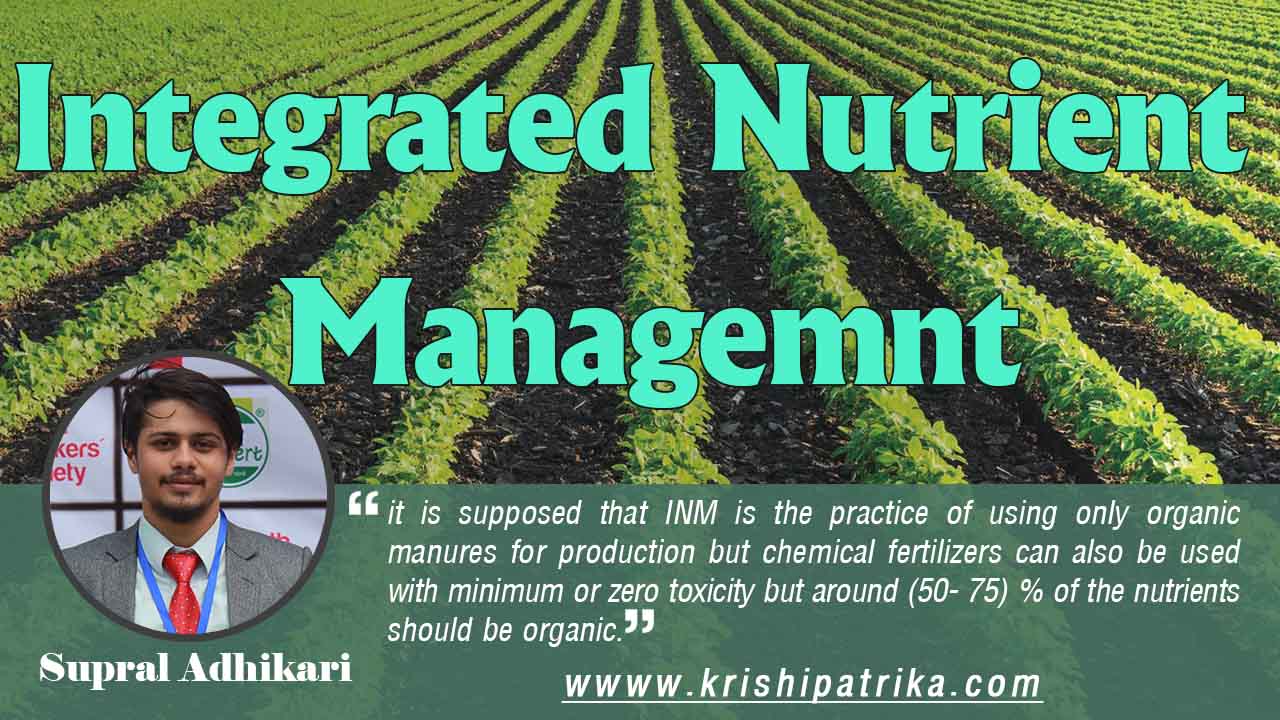
Integrated Nutrient Management is the practice in agriculture with all the sources of nutrients being applied to the soil for better yield; better soil productivity and sustainable soil conservation. Simply, INM is the practice of using nutrients for optimum production conserving the soil. According to WHO, Integrated Nutrient Management is the proper management of soil, nutrient, water, crop, and vegetation, in a specific farming system with the aim of improving and sustaining soil fertility and land productivity reducing environmental degradation. The main aim of IPM is to optimize the physical, chemical, biological and hydrological properties of the soil, enhancing farm productivity with minimum land degradation.
Generally, it is supposed that INM is the practice of using only organic manures for production but chemical fertilizers can also be used with minimum or zero toxicity but around (50- 75) % of the nutrients should be organic.
Necessity of INM
Heavy use of chemical fertilizers after Green Revolution
Deterioration of soil productivity and soil quality by the excess use of chemicals
High toxicity resulting in loss of soil micronutrients
High use of nitrogenous fertilizers causing nitrogen toxicity in the ecosystem
Components of INM
Soil (native nutrients)
Livestock (dung, manures, residues)
Household (bio degradable residues)
Forest (cover crops, green manure)
Field (crop residues)
Basic approaches of INM at farm level
The physical, chemical, biological and hydrological properties of soil along with climatic conditions of the area should be matched with land use requirements of the agricultural crops.
The limiting factors should be identified and overcome. [Example: Proper irrigation in arid condition]
Basic intercultural operations in the field should be practiced. [Example: Timely weeding to minimize the nutrient loss]
Complementation of three basic components of INM (crop, livestock and fertilizers)
The leaching of nutrients causing the loss of nutrients should be replenished mainly by organic sources. (Green manure, organic manure, mycorrhiza, rhizobium, vermin-compost, etc.)
Crop rotation, conservation tillage, proper infiltration and agroforestry practices should be followed.
Advantages of INM
Ensures balanced nutrition to the crops
Enhances and maintains crop production and soil productivity
Improves and sustains the properties of soil (physical, chemical, biological and hydrological)
Fulfills the nutrient demand of specific crops with both native and applied fertilizers
Promotes the availability and accessibility of both the native and applied nutrients
Reduces the nutrient loss and promotes nutrients from organic sources









